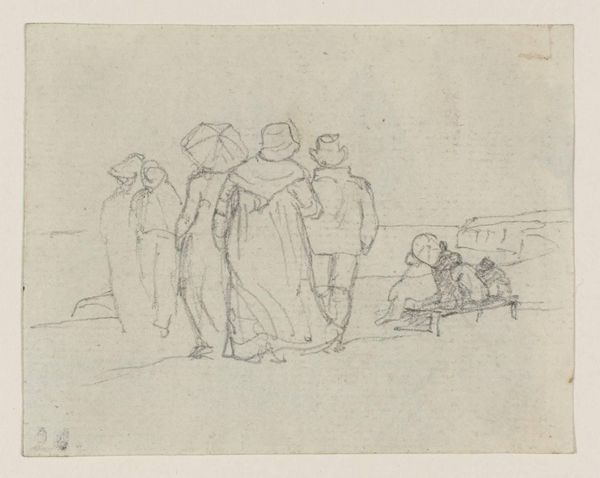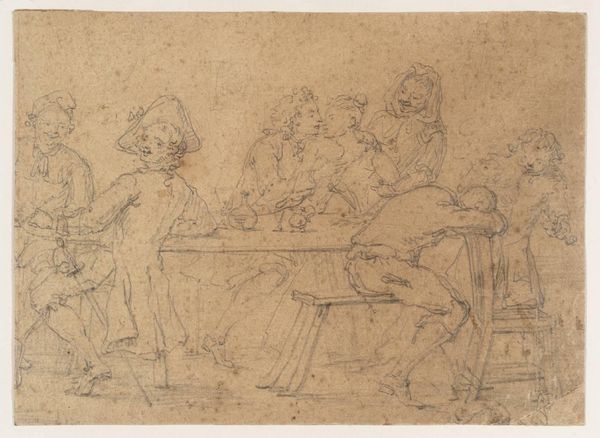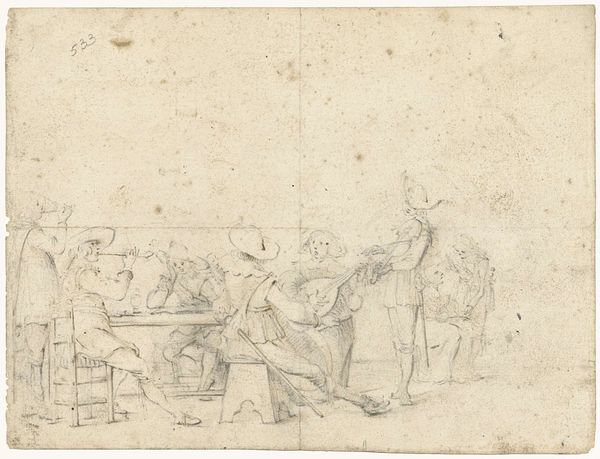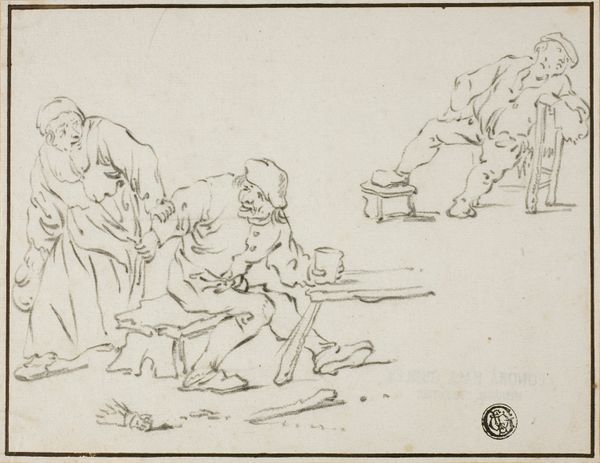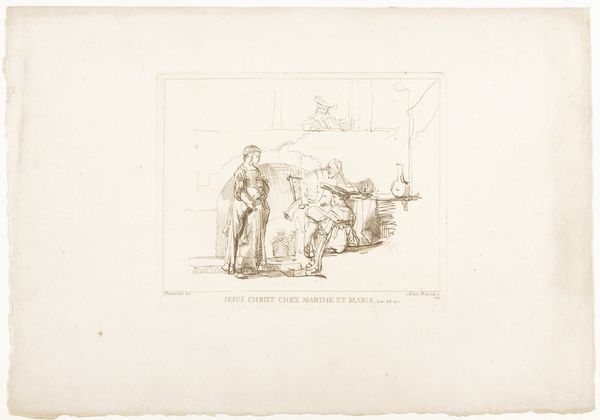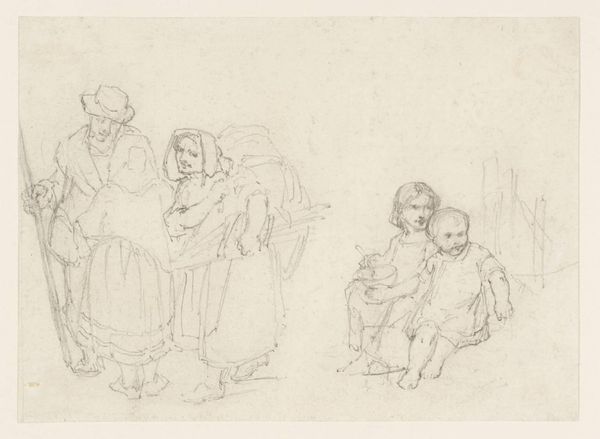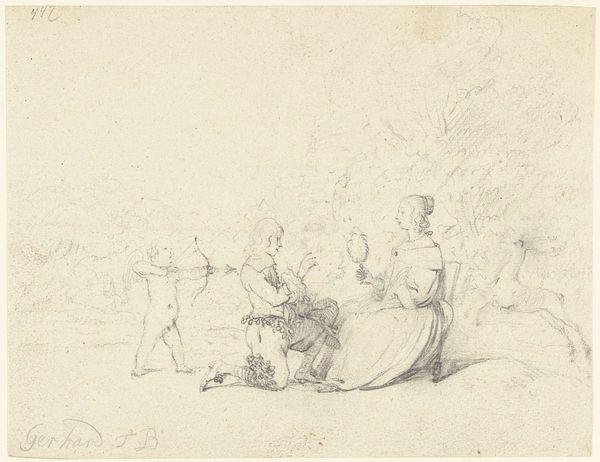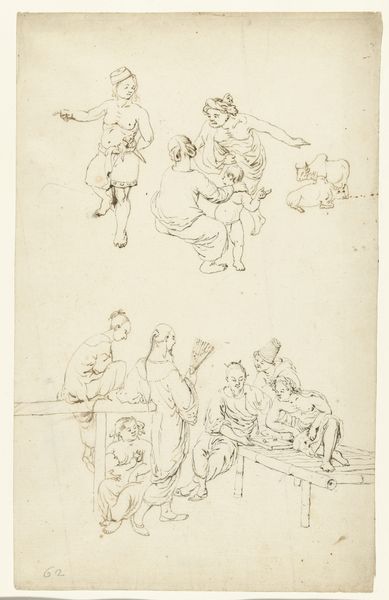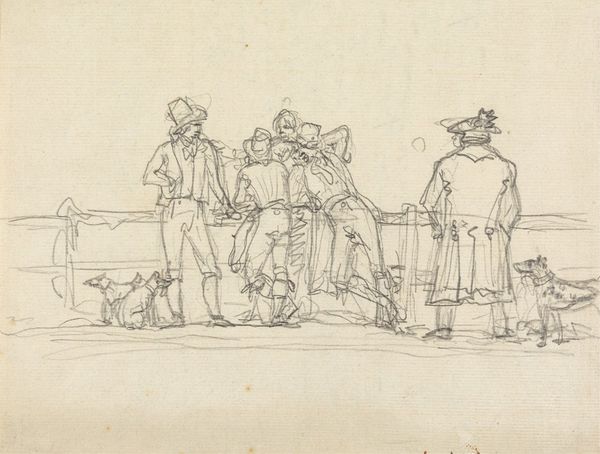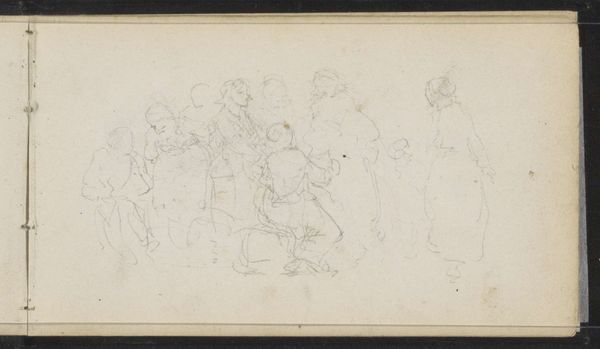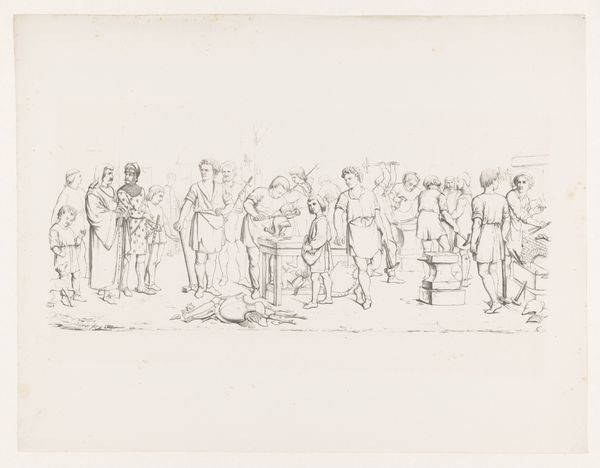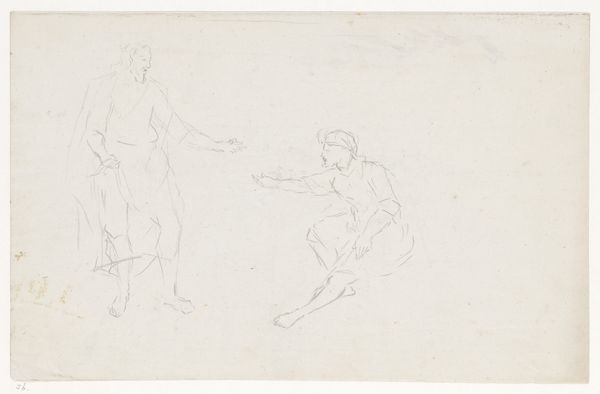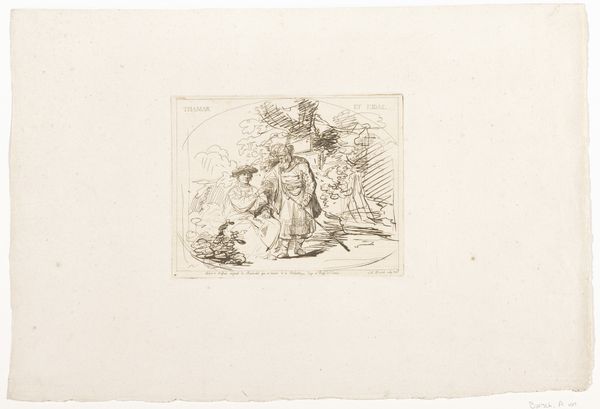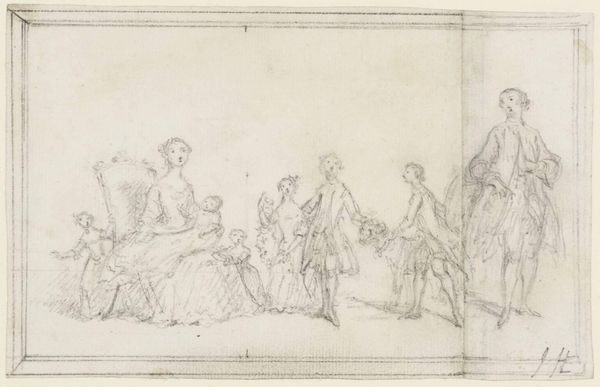
Familie, waarvan de vader een kopje thee (?) drinkt 1782 - 1837
0:00
0:00
pieterbartholomeuszbarbiers
Rijksmuseum
drawing, paper, ink, pen
#
portrait
#
drawing
#
comic strip sketch
#
figuration
#
paper
#
personal sketchbook
#
ink
#
idea generation sketch
#
sketchwork
#
ink drawing experimentation
#
romanticism
#
pen-ink sketch
#
line
#
sketchbook drawing
#
pen
#
genre-painting
#
storyboard and sketchbook work
#
sketchbook art
#
realism
#
initial sketch
Dimensions: height 174 mm, width 228 mm
Copyright: Rijks Museum: Open Domain
Editor: This is "Family, father drinking tea (?),” by Pieter Bartholomeusz. Barbiers, made sometime between 1782 and 1837, using pen and ink on paper. It has the spontaneous quality of a sketch. What story do you see unfolding in this piece? Curator: I see a snapshot of domesticity charged with the social tensions of its time. Genre painting, particularly during this period, often served as a moral mirror to society. Look closely – the father gestures, perhaps instructing or reprimanding. How does that power dynamic impact the other family members present? Editor: Well, the mother seems fairly disengaged and the child looks away from the father's gesturing arm. Is the artist trying to make a statement about family dynamics? Curator: Precisely! Consider the position of women and children within the 18th and 19th-century Dutch household. Were their voices valued equally? Notice the father's attire – how might his clothing reflect his social standing and authority? Editor: It does suggest a certain authority…I hadn’t considered the clothing in that way. Curator: These visual cues prompt us to reflect on gender roles, class structures, and familial power dynamics that were part of everyday life, but were also intensely negotiated. This "sketch" may appear simple, but it subtly critiques the social norms that confined people within rigid structures. Editor: It’s amazing how much social commentary can be packed into what I initially perceived as just a simple sketch. Curator: Absolutely. Art offers opportunities to investigate, discuss, and perhaps even challenge such hierarchies, even within the intimate sphere of family. That invitation to question remains relevant today.
Comments
No comments
Be the first to comment and join the conversation on the ultimate creative platform.
